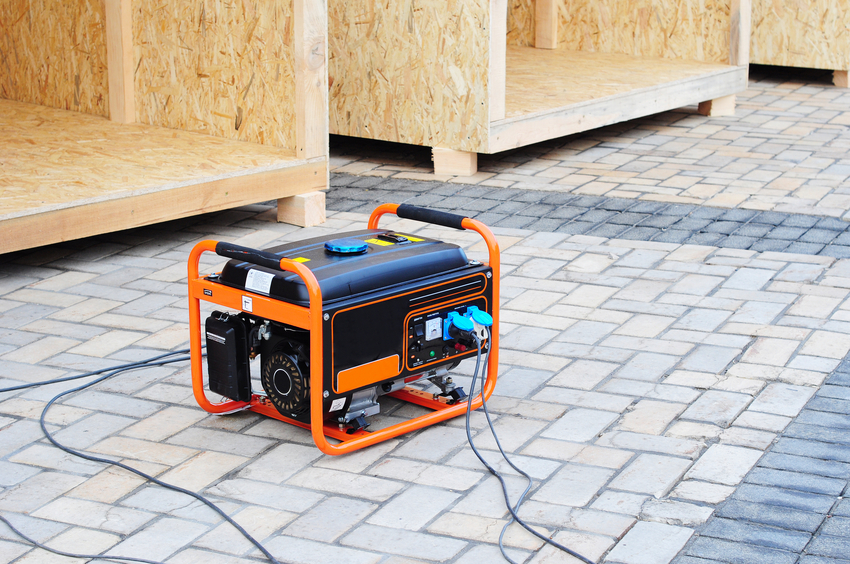Have you ever lost power and needed to use a portable generator to continue operations? Today we’ll take a look at safety tips for workers who use portable generators.
 |
Many facilities use a backup or emergency generator to continue operations in case power is lost. In many cases, it is a portable generator. As useful as they are, portable generators can be hazardous to workers unless they are maintained and operated properly.
Potential workplace hazards associated with portable generators include shocks and electrocutions, fires, carbon monoxide (CO) inhalation, and noise. Here are some tips for avoiding these hazards when your workers are operating portable generators.
Prevent Shocks and Electrocutions
Nobody wants to hear “ZAP!” in the workplace. Take these precautions to avoid shocks and electrocutions when using portable generators.
- If you are attaching a generator directly to the electrical system of your facility or one of its structures (e.g., an on-site trailer), always have a qualified electrician has installed a transfer switch on the generator. This will ensure that the wiring system does not energize at great distances, which can put utility workers and others in the area at risk for electrocution.
- If you plug an appliance directly into the generator, use the manufacturer’s supplied cords or extension cords that are grounded. Make sure the cords are not damaged in any way. Do not use underrated cords.
- Do not overload a portable generator.
- Use ground fault circuit interrupters (GFCIs), especially where electrical equipment is used in or around wet or damp locations.
- Make sure the generator is properly grounded and that the grounding connections are tight.
- Keep the generator dry. If you need to use it in the rain, provide a canopy. Keep the generator elevated in flood situations. Don’t mess with the electrical components of a generator if you are wet or standing in water.
Prevent Fires
Generators become hot while running and remain hot for a long time after they are shut down. Fuels used in generators can ignite when spilled on hot parts. Take these precautions to avoid fires with your portable generator.
- Before refueling, shut down the generator, and let it cool.
- Store and transport generator fuels in approved containers that are properly designed, marked, and vented.
- Keep the fuel containers away from the generator.
- Do not smoke around the generator or the fuel containers.
- Inspect portable generators for damage or loose fuel lines that may have occurred during transportation and/or handling.
Prevent CO Inhalation
CO is colorless and odorless, and therefore there is no warning when the toxic gas builds up in an enclosed space. Take these precautions to avoid CO poisoning.
- Never use a generator in an enclosed space. Open windows and doors may not prevent the buildup of CO.
- Make sure the generator has 3 to 4 feet of clear space on all sides and above it to ensure adequate ventilation.
- When outdoors, do not place a portable generator near doors, windows, or vents because the CO could enter the building.
- If anyone shows symptoms of CO poisoning, e.g., dizziness, headaches, nausea, or tiredness, get to fresh air immediately and do not reenter the area until it is determined to be safe by properly trained and equipped personnel.
Prevent Noise and Vibration Hazards
Generators vibrate and are noisy. Excessive noise and vibration can cause hearing loss and fatigue and can affect job performance. Take these precautions to avoid noise and vibration hazards when using portable generators:
- Keep portable generators as far away as possible from work areas and gathering spaces.
- Ensure that all workers who work with or near generators wear hearing protection.
Has generating materials for your safety program become a slog? Check Safety.BLR.com® for tips, tools, and guidance to help you boost safety in your workplace.
